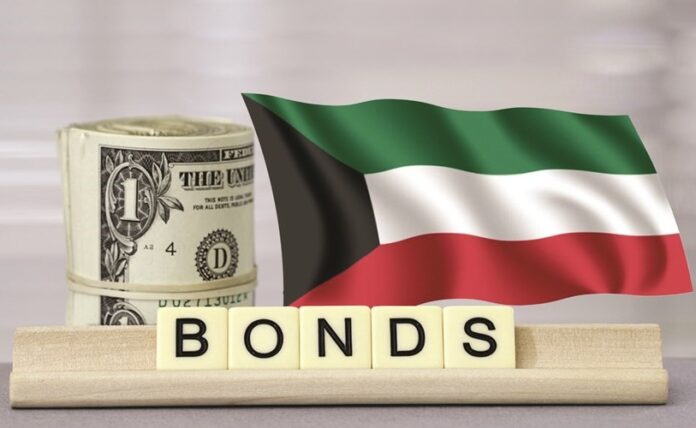The report issued by KAMCO Invest on the fixed income markets in the Gulf countries for 2023 has highlighted a significant decline in bond issuances in Kuwait; dropping to their lowest levels over the past three years, totaling approximately $300 million in the preceding year. This represents a notable decrease compared to $500 million in 2022 and $2.2 billion in 2021.
The report underlines that emerging markets, including those in the Gulf, have experienced substantial bond issuances since the beginning of 2024. The aim is to capitalize on the growing demand for new bond issues and secure favorable rates amid the rapid decline in bond yields since Q4 2023, reports Al-Anba daily.
With anticipated interest rate cuts by major central banks, already factored into existing bond yields, the report predicts a continued decline in yields in the near term. However, it also cautions about heightened risks in 2024, particularly regarding geopolitical issues in the Middle East, economic challenges in China, and major elections.
Saudi Arabia has emerged as a leader in bond issuances, accounting for the largest share at $12.0 billion, with purchase orders reaching $30 billion. The report emphasizes that the Kingdom is seeking to bridge the expected fiscal deficit of around $25 billion in 2024. The overall value of bonds issued globally since the beginning of the year has reached approximately $37 billion.
The Middle East and North Africa region witnessed an increase in the total value of bond issuances, reaching $95.9 billion in 2023 compared to $80.6 billion in 2022. This growth is attributed to a surge in corporate issuances compensating for the decline in sovereign bond issues in the region.
The Gulf Cooperation Council countries were the primary drivers of the surge in bond issuances, with a total value of $58.2 billion in 2023, a 44.2% increase over 2022. In contrast, countries in the Middle East and North Africa region outside the GCC experienced a decline in bond issuances to $37.7 billion in 2023 compared to $40.2 billion in 2022.
Looking ahead to 2024, the report anticipates central banks in major countries reducing interest rates for the first time in two years. However, the extent of these cuts varies, with expectations of a 150 basis points reduction by the US Federal Reserve and a more substantial reduction of up to 200 basis points in the Eurozone.
Sukuk issuances are predicted to rebound in 2024 after two consecutive years of decline. Favorable factors include lower prevailing rates, stable crude oil prices around $70 per barrel, and diversification efforts by countries and companies adopting Islamic Sukuk issuances in their financing mix.
The report also emphasizes that sovereign entities in the Gulf Cooperation Council countries are likely to issue debt instruments using Sukuk, particularly due to the uncertain outlook for oil prices. Additionally, the value of Sukuk due for repayment is expected to reach a record high of $37.9 billion in 2024.
Finally, the report sheds light on the global Sukuk market, indicating a decline for the second consecutive year in 2023, reaching $108 billion, the lowest in five years. Saudi Arabia maintained its leading position as the top global Sukuk issuer, with issuances totaling $38.4 billion in 2023, despite a decline from $44.5 billion in 2022. Malaysia and the UAE secured the second and third positions, respectively, in global Sukuk issuances.

















